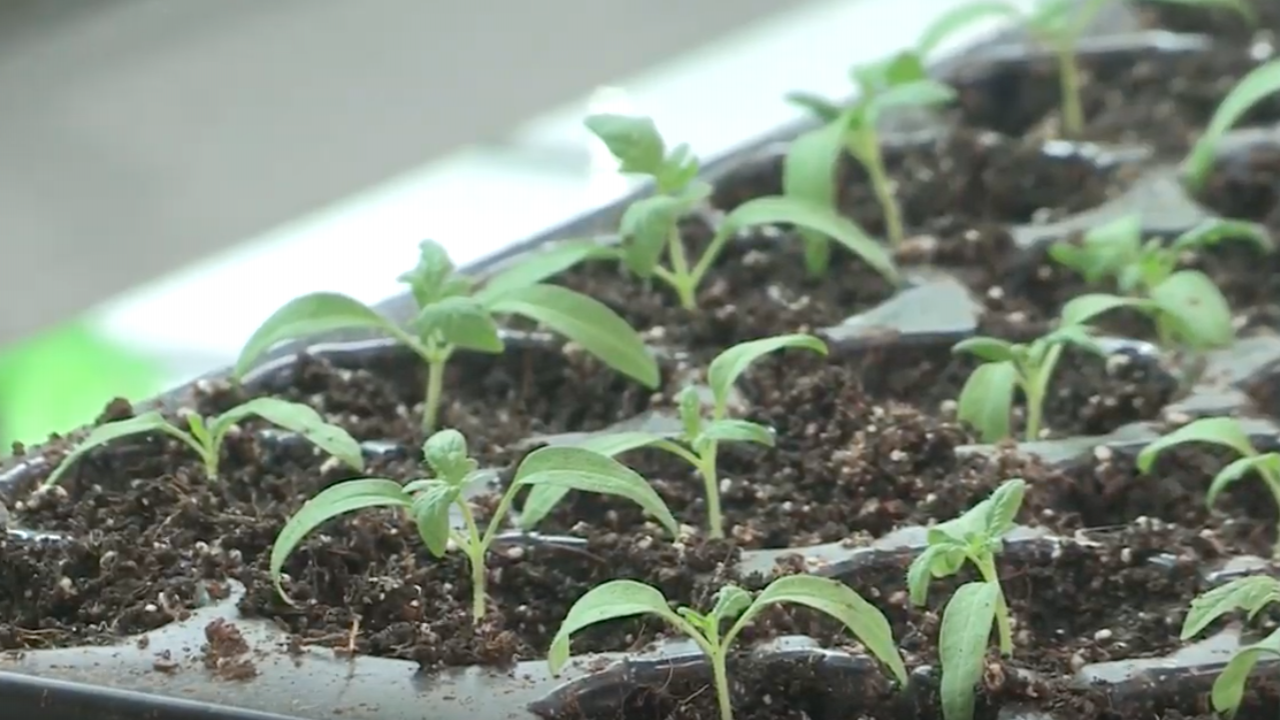
Danielle Thomas picks up a tray of tomatoes and places it on a shelve in a heated facility inside the Brady Farm.
It’s a farm located on Syracuse’s South Side. An area the county says is full of local food deserts.
Danielle is the market manager for the Brady Farm. She’s lived in Syracuse her whole life so farming is new to her. She’s held the position for nearly a year now and loves it.
“For me I feel free here. They make it accessible to come and get fresh air, volunteer, there’s a lot of things the Brady farm definitely offers,” said Thomas.
She’s still working on learning all the technicalities that come with farming and exploring her new found passion.
“I did not like vegetables before. But tasting the difference between store brought and freshly picked, and knowing I planted that. It’s amazing,” said Danielle emphatically.
After working the farm and learning to like vegetables through the experience, Danielle discovered how expensive fresh produce can be.
“Me not eating vegetables from the beginning, I didn’t know how much they cost. So now me being market manager. I go to the grocery store, I check the prices. I try to compare the the prices… Vegetables are very expensive in the store. In any grocery store. And its much cheaper here. Much fresher,” Said Danielle.
Part of the reason for this is that the South Side of Syracuse is inundated with small corner stores. The Onondaga County Food Environment Report demonstrates that the area has limited access to major supermarkets, and in turn suffers some of the highest obesity rates in the city.
“We have some of the worst food deserts in the country at least in terms of disparity between access to food and the ease at which people are able to get a hold of stuff like that which is one of the big benefits i think of Brady in particular because we are so located within a local area in need of food,” said Jacob Chessler, an employee of the Brady Farm.
The farm hopes to mitigate some of the community’s food needs by making produce affordable. It accepts government subsidized food programs like SNAP, formerly known as Food Stamps, so that more residents can access fresh food.
“Ill spend 3 dollars here on a bunch of leaks, i could go to price chopper or any other grocery story and get two leaks for 5 dollars thats like a two dollar difference on produce,” explained Danielle.
The farm also strives to donate 25 percent of its produce to residents in need. It works with community members and provides a box of freshly picked vegetables to recipients of donations.
“Leaks, winter, squash, garlic, mushrooms, onions, basically whatever we had left through the summer we sold it through the CSA, ” explained Danielle.
This winter, Danielle received donated boxes regularly. While she doesn’t know who sponsored the donation, she says she is grateful.
” I don’t know who did it, but i appreciate it,” said Danielle.




